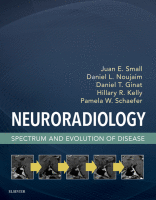Physical Address
304 North Cardinal St.
Dorchester Center, MA 02124

Introduction Idiopathic intracranial hypertension (IIH) is a disorder of elevated intracranial pressure (ICP) without apparent inciting etiology. Pseudotumor cerebri (PTC) is also a commonly accepted term describing the same disorder. Many authors advocate limiting the definition of IIH to a…

Introduction Intracranial hypotension is a clinical manifestation of low cerebrospinal fluid (CSF) volume or pressure caused by a dural CSF leak. It is usually precipitated by dural injury from an iatrogenic event such as a lumbar puncture, recent surgery, overshunting,…

Background Hemangioblastoma is a vascular tumor of the central nervous system (CNS). It most commonly occurs within or on the surface of the cerebellum and represents the most common primary tumor of the posterior fossa in adults. Hemangioblastomas may also…

Introduction Due to the wide array of available accepted therapies, as well as the increasing number of experimental treatments undergoing clinical trials for the management of glial neoplasms, the task of the radiologist to make appropriate interpretations can seem daunting.…

Introduction Sarcoidosis is a chronic idiopathic, noninfectious, granulomatous disease characterized by the formation of noncaseating granulomas. It most commonly involves the lungs, skin, and lymph nodes, although any organ or organ system may be affected. The disease most commonly affects…

Introduction Central nervous system–immune reconstitution inflammatory syndrome (CNS-IRIS) represents a diverse group of disorders, all of which are characterized by an exaggerated inflammatory response to either a dead or dying opportunistic infection, viable pathogen from a persistent infection, or a…

Introduction Progressive multifocal leukoencephalopathy (PML) is an opportunistic subacute demyelinating infection of the central nervous system (CNS) first described in 1958. The causative agent is the polyomavirus JC that has tropism for oligodendrocytes. Asymptomatic primary infection occurs in childhood, with…

Introduction Autoimmune encephalitis refers to a recently recognized group of immune-mediated disorders that involve the central nervous system (CNS). These conditions, which overlap in their clinical manifestations and imaging findings, are ultimately tied to specific antibodies ( Fig. 11.1 ).…

Introduction Acute disseminated encephalomyelitis (ADEM) is a rare, usually monophasic, immunologically mediated inflammatory disease of the central nervous system (CNS) with characteristic polyfocal involvement of the neuroaxis on imaging. It may occur at any age but is most commonly seen…

Introduction Cysticercosis is a parasitic infection caused by the larval stage of the tapeworm Taenia solium . The central nervous system (CNS), eyes, and muscles are the most commonly involved sites. Neurocysticercosis (NCC) is considered the most common parasitic infection…